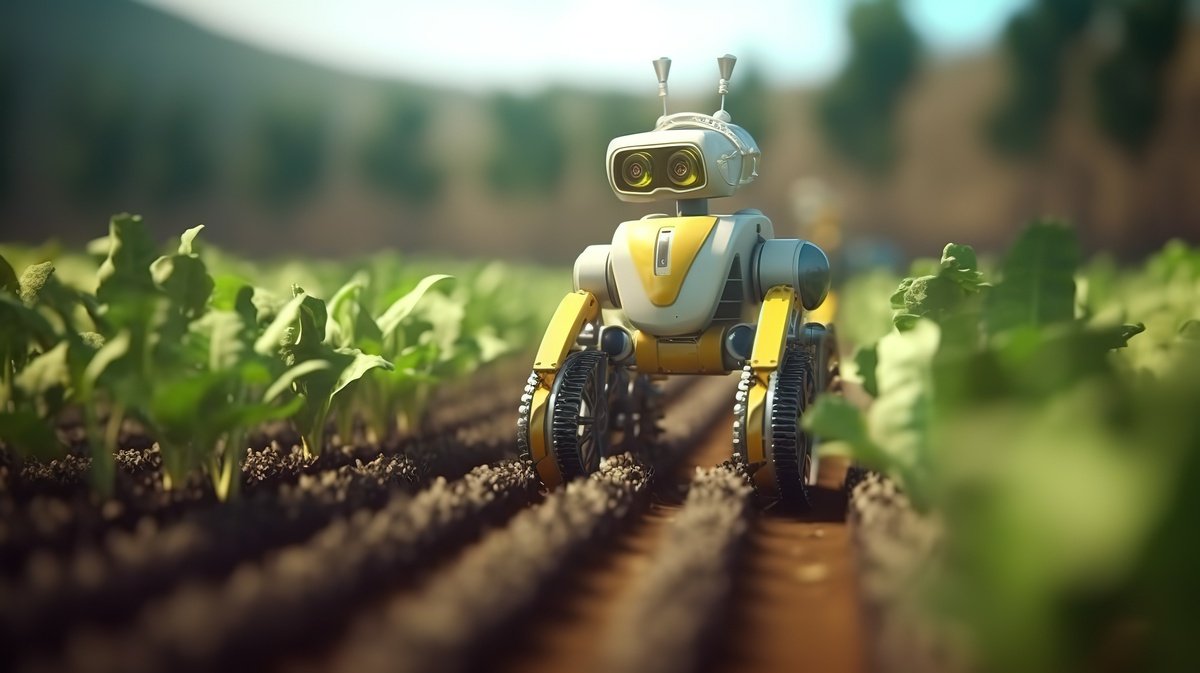
Affordable Groceries: How Crop-Health Sensors Could Help
- foodfightadmin
- June 3, 2024
- Agriculture, Hunger In America
- resources latest july, rsc pages, rscl
- 0 Comments
Crop-health sensors are poised to revolutionize agriculture by reducing production costs and lowering grocery prices. These advanced technologies, which monitor plant health in real-time, offer farmers the ability to optimize their use of resources and enhance crop yields, leading to more efficient and sustainable farming practices.
As the agricultural sector faces mounting pressure to increase productivity while minimizing environmental impact, crop-health sensors provide a crucial tool for meeting these challenges. These sensors, embedded in fields, use a combination of imaging, spectroscopy, and data analytics to monitor various indicators of plant health, including nutrient levels, water stress, and disease presence. By providing precise, real-time data, farmers can make informed decisions about irrigation, fertilization, and pest control.
Dr. Emily Parker, an agronomist at Iowa State University, underscores the importance of these technologies. “Crop-health sensors enable us to move from reactive to proactive farming. Instead of responding to problems after they arise, farmers can now prevent issues from developing in the first place,” she explains. “This not only improves crop yields but also reduces the reliance on chemical inputs, which is better for the environment and for consumers.”
One of the key benefits of crop-health sensors is their ability to optimize resource use. Traditional farming methods often rely on uniform application of water, fertilizers, and pesticides, which can lead to overuse in some areas and underuse in others. By contrast, sensor data allows for precise application tailored to the specific needs of different parts of a field. This precision agriculture approach ensures that plants receive exactly what they need to thrive, reducing waste and lowering costs.
A report from the National Institute of Food and Agriculture highlights the potential economic impact of these technologies. According to the report, widespread adoption of crop-health sensors could reduce agricultural input costs by up to 20%. These savings could translate into lower production costs for farmers, which in turn could lead to reduced prices for consumers at the grocery store.
Farmers who have integrated crop-health sensors into their operations report significant benefits. John Blake, a corn and soybean farmer in Nebraska, shares his experience: “Since we started using crop-health sensors, we’ve seen a noticeable improvement in our yields and a reduction in our input costs. The sensors help us apply fertilizers and water more efficiently, and we’ve also been able to catch diseases early before they spread.”
In addition to improving efficiency and reducing costs, crop-health sensors also promote sustainability. By enabling more targeted use of inputs, these technologies help reduce the environmental footprint of farming. Less runoff of fertilizers and pesticides into waterways, lower greenhouse gas emissions from over-application of nitrogen fertilizers, and improved soil health are among the environmental benefits associated with precision agriculture.
Dr. Mark Johnson, an environmental scientist at the University of California, Davis, emphasizes sustainability. “Precision agriculture technologies like crop-health sensors are essential for creating a more sustainable food system. They help farmers produce more food with fewer resources, which is crucial as we work to feed a growing global population while protecting our planet.”
The development and deployment of crop-health sensors have been driven by advances in several fields, including remote sensing, machine learning, and the Internet of Things (IoT). Modern sensors can be integrated with drones, satellites, and ground-based devices, providing comprehensive coverage and detailed insights into plant health.
Despite the promise of these technologies, challenges remain. The initial cost of sensor systems can be a barrier for small and medium-sized farms. Additionally, the successful implementation of precision agriculture requires farmers to have a certain level of technical expertise and access to reliable data infrastructure.
To address these challenges, various stakeholders, including government agencies, industry leaders, and research institutions, are working to make crop-health sensors more accessible. Subsidies and grants for technology adoption, training programs for farmers, and the development of user-friendly platforms are among the initiatives aimed at promoting wider use of these technologies.
Looking ahead, the continued evolution of crop-health sensors promises to further enhance their capabilities and affordability. As technology advances, sensors are expected to become more accurate, durable, and cost-effective, making them an increasingly viable option for farmers of all sizes.
Crop-health sensors represent a significant advancement in agricultural technology with the potential to reduce costs, improve yields, and promote sustainability. By providing farmers with the tools to optimize their practices, these sensors could lead to lower grocery prices and a more efficient food production system. As the agricultural sector embraces these innovations, the benefits will extend beyond the farm, reaching consumers and the environment alike.








